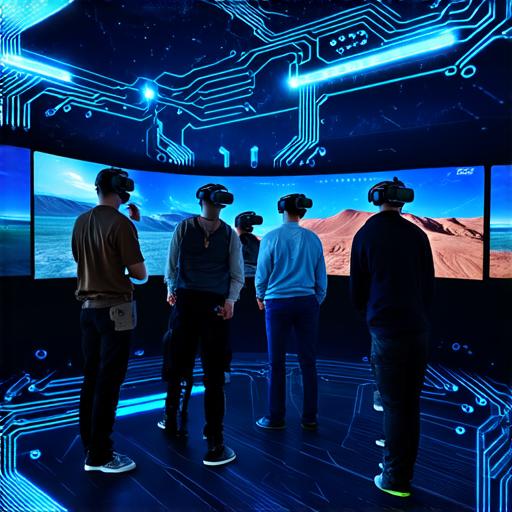Virtual reality (VR) is a rapidly growing technology that allows users to experience immersive digital environments.
Pros of Investing in Virtual Reality Technology
1. Immersive Experience
One of the main advantages of VR is that it provides an immersive experience. With VR, users can feel as if they are physically present in a virtual environment, providing a unique and engaging experience that traditional media cannot replicate.
2. Increased Productivity
VR technology has been shown to increase productivity by allowing workers to train in simulated environments, reducing the need for physical training and minimizing the risk of injury.
3. Enhanced Learning

Virtual reality provides an excellent platform for learning, as it allows users to experience scenarios and situations in a safe and controlled environment. This makes VR ideal for training and education applications.
4. Entertainment
VR technology can be used for entertainment purposes, providing a unique and engaging gaming experience that traditional gaming platforms cannot match.
Cons of Investing in Virtual Reality Technology
1. High Costs
One of the main disadvantages of VR is that it can be expensive to purchase and maintain. The cost of VR hardware, software, and maintenance can be prohibitively high for some businesses.
2. Limited Applications
While VR has many potential applications, not all businesses will need or benefit from the technology. Some businesses may find that traditional media is more effective in achieving their goals.
3. Technical Issues
VR technology is still relatively new, and there can be technical issues with hardware and software that can affect the user experience. These issues can be frustrating for users and may limit the effectiveness of VR technology.
4. Limited Accessibility
Virtual reality technology can be isolating, as it requires a headset and other specialized equipment to use. This can limit accessibility for some users, particularly those with disabilities or limited resources.
Case Studies: Real-Life Examples of Virtual Reality Technology in Action
1. Training
Virtual reality technology is being used increasingly for training purposes, as it allows workers to train in simulated environments that are safe and controlled. For example, the U.S. military has been using VR for training soldiers in combat scenarios, allowing them to practice their skills in a safe environment.
2. Education
Virtual reality technology is being used in education applications, as it allows students to experience scenarios and situations in a safe and controlled environment. For example, medical schools are using VR simulations to train students in surgical procedures, providing a more realistic and effective learning experience.
3. Entertainment
Virtual reality technology is being used in the entertainment industry, as it provides a unique and engaging gaming experience that traditional gaming platforms cannot match. For example, the game “Beat Saber” uses VR to provide an immersive gaming experience that has become extremely popular among users.
